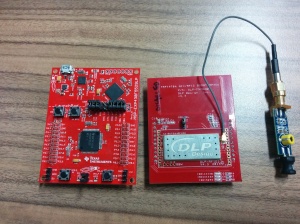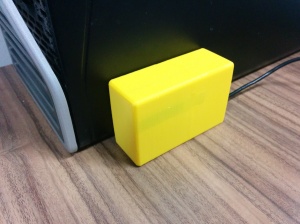After my experiments with NFC readers I felt it was time to actually create something useful to work with my NFC implant. At work I need to make sure that my PC is locked whenever I leave my desk. It’s not that I work with anything really sensitive, it’s just that given half a chance my colleagues will certainly send an email on my behalf admitting to unusual sexual inclinations or offering to buy everyone biscuits.
I decided the easiest way to do this was with keyboard emulation. It doesn’t require me to have any privileged domain access, modify the PC or install anything that compromises security. Plus, it should all be possible using a MSP430F5529.
My proof of concept involved a MSP430F5529 LaunchPad and a . I made sure that I could emulate a USB keyboard, implement a USB CDC serial port and read my tag id.The USB side of things was adapted from some of TI’s example code. The NFC stuff was a little trickier. The Booster Pack is sold bundled with either the G2 or F5529 Launchpads. However the sample code is surprisingly complicated and only supplied for the MSP430G2553. Porting it over to the MSP430F5529 should have been fairly simple – just changes to some in assignment and clocking. It somehow took me ages but I managed it in the end. I must publish my ported code to save other people the same trouble.
I combined them all together to implement the following:
- A USB CDC serial port allows me to set the password (but not read it). It’s stored in the microcontroller’s flash so persists when powered down.
- Pressing one button on the launchpad send Windows-L to lock my PC. (Not actually easily accessible in its current form.)
- It scans continuously for NFC tags and if it sees mine it sends Ctrl-Alt-Del{password}Enter
I’ve got a little bit of tidying of the code before I include it. As it’s evolved from two different lots of sample code in different styles it’s a little bit messy. I’ll also attach the STL files for the case – designed once again in my 3D modelling package of choice OpenSCAD.
Source code (still messy) and STL files (under files folder) are now available at https://bitbucket.org/fredmurphy/public/src/127c1b2f26305bd8b2b2184084927da72457f9e5/LoginNFC/?at=master




